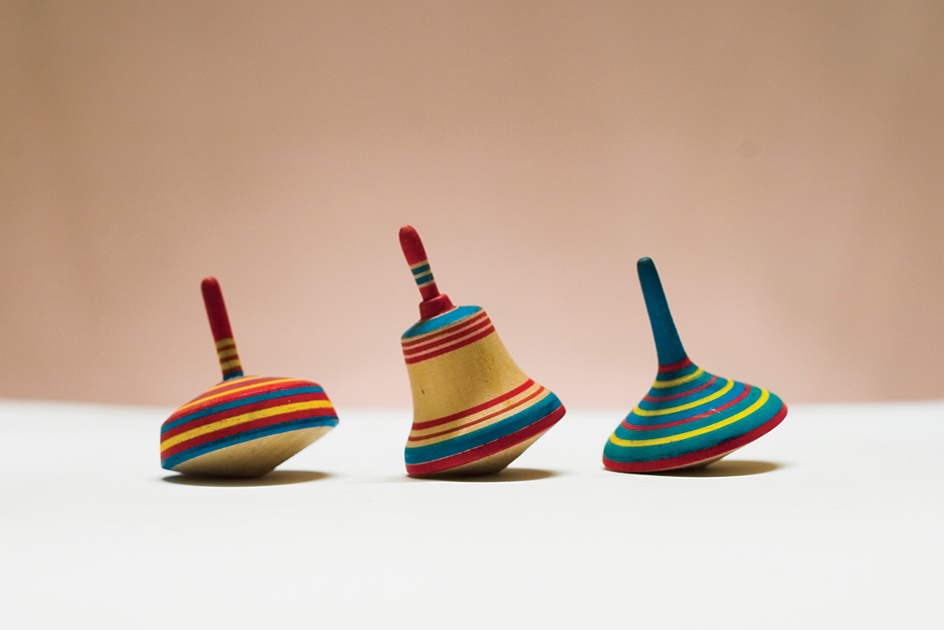Top is the name for a child’s toy. Most tops have cylindrical or pear shapes. They are usually made of wood, metal, or plastic, and often spin on a metal tip.

Kinds of tops.
The best-known top receives its motion from a string that has been wrapped around it and suddenly pulled. Pulling the string makes the top spin around and stay erect without being held up. Scientists use this spinning force in a type of gyroscopic top that helps stabilize boats and airplanes (see Gyroscope). Other tops spin when a center stem, called a spindle, is twirled between the thumb and forefinger. Mechanical tops receive power to spin from an inside spring that can be compressed by winding with a key, pinching, or pumping. In musical tops, holes, reeds, or whistles inside the top produce sounds when the top spins.
History of tops.
No one knows exactly when people first began to use tops. But children in ancient Greece played with them, and tops have been a popular amusement in China and Japan for hundreds of years. In the 1800’s, people in Asia often became professional top spinners. They made tops do many tricks, such as jumping steps and walking up an inclined board. Today, adults in Malaysia compete in top-spinning contests.
Tops became popular in Europe during the 1700’s. In a game called diablo, the player whipped a top into the air. Sometimes the player tried to see how high the top could be sent. Other times, the top was caught in the hand from various positions. Many types of self-winding tops were used in the 1800’s. The bandilor top unwinds itself while going up an incline and rewinds as it comes down. The top can be manipulated to wind and unwind itself many times. Tops were among the first toys patented in the United States. The torpedo top contained a ball that shot into the air when a paper cap exploded.
See also Beyblade.
